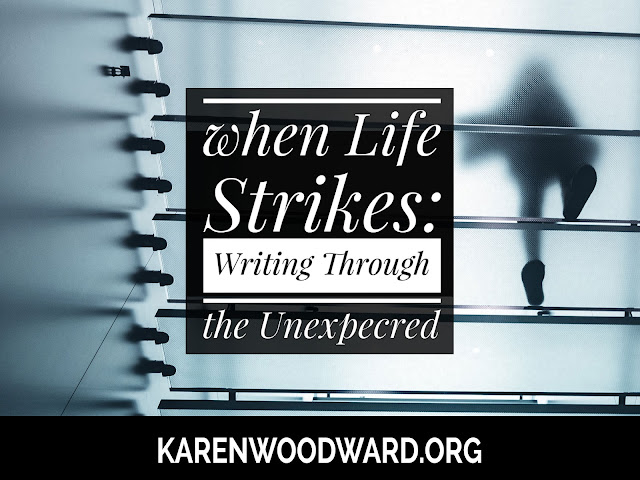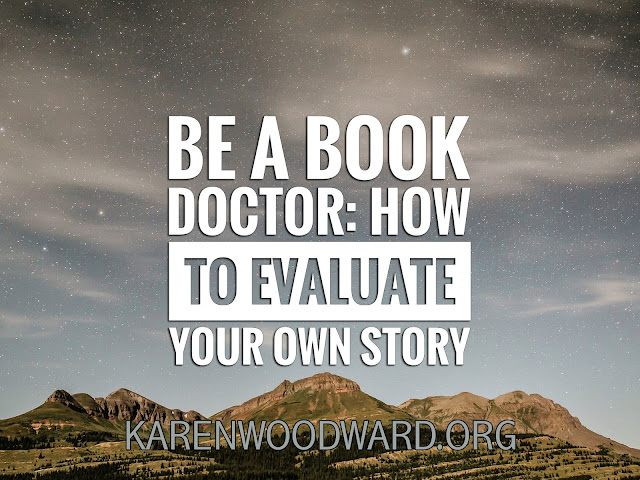Hi! This is the first article in a series: Helpful or Harmful? Thanks to everyone on Twitter (all three people!) who helped me choose a name. Seriously, much appreciated.
Each post in this series will examine a different rule for writing. I’ll tell you if I think it’s a useful rule and why. I don’t think any rule is 100% helpful, there are almost always exceptions (at the end of this article I will write about a rule I think always applies).
I’ll also look at my favorite authors’ work to see if THEY follow the rule. If Stephen King, Margaret Atwood and Neil Gaiman don’t follow a particular rule, I suspect it is not a rule worth following.
Are There Rules For Writing?
As you may know, all my life I’ve been curious about what separates a riveting, can’t-put-it-down, stay-up-until-3am story from one you put down after reading two pages.
Now, if you’re thinking: “Writing is art! There are no rules.” You’re right! If one is writing purely for oneself (for instance, in a journal) then, seriously, do not worry about writing any particular way. Look into your heart, be honest, and you can’t go wrong.
Also, if you’re writing a first draft, do not worry about rules. Some writers have reached the point where certain ‘rules’ have become imbedded within them, it’s as though they have a muse who sits on their shoulder as they write, a muse which they ignore at their peril. But, in general, save the rules for the second or third draft.
Finally, if you are doing this as a hobby (you are happy never to make any money from your work) and feel that if others read your work, that’s fine, and if they don’t, that’s fine. If that’s the case, then great! I have known several writers like this and they are gainfully employed in other ways and very happy. I admire them.
BUT, if you want people who are grumpy and starved for time and have a lot of other things to do when they’re not working at a job they hate, if you want these kind of people to read your story from beginning to end, then it’s a good idea to craft your story to be easy to read. It’s a good idea to make your story exciting.
Yes, I’m talking about popular fiction.
I’m talking about the kind of stories that, when told around a campfire, captivate your audience. You know what I’m talking about. Sometimes when you’re telling a story -- if it’s a good story -- they’re transfixed. They lean forward and look intently at you, they don’t interrupt -- and if someone does interrupt your audience tells them to please shush. You have them on the edge of their seats. THAT’s the kind of story I want to read. And write.
Bricklayers have rules that tell them how to do their job well. So do nurses. So do surgeons. So do writers. There ARE things that differentiate an entertaining story from a boring one.
That said, what rules can never do (and I know I’ve said this, above, but it’s worth repeating) is tell you how to write a great story because that comes from the heart. That’s magic. The rules are never for the first draft, they are never for that first burst of inspired messiness you scrawl across a blank page, bringing characters into being, creating new worlds. They are for the (oh so many) drafts that come later.
A Qualification
BUT, that said, I think I agree with Anne Rice that no one set of rules fits all writers. Each writer, each one of us, has a different style. No one set of rules is right for us all.
And, really, in that sense, there are no hard-and-fast rules.
Here’s an example of a rule that isn’t 100% correct. We are often advised to use simple, short sentences. And that’s good advice. But it doesn’t apply across the board. For example:
“I wonder which is preferable—to walk around all your life swollen up with your own secrets until you burst from the pressure of them, or to have them sucked out of you, every paragraph, every sentence, every word of them, so at the end you’re depleted of all that was once as precious to you as hoarded gold, as close to you as your skin—everything that was of the deepest importance to you, everything that made you cringe and wish to conceal, everything that belonged to you alone—and must spend the rest of your days like an empty sack flapping in the wind, an empty sack branded with a bright fluorescent label so that everyone will know what sort of secrets used to be inside you?” Margaret Atwood, The Blind Assassin
That’s a great sentence! [1] When it comes to writing, if writing is magic, Margaret Atwood is a master wizard.
But, on the other hand, I think there are some rules -- at least one rule -- that applies for all writers all the time: don’t be critical of yourself, of your work, as you write your first draft.
Your First Draft: Just Finish The Story
When you’re working on your first draft, just write. Maybe your work isn’t grammatical, maybe it isn’t even factual! (Please don’t misunderstand, research is essential, but it should wait until a later draft. Trust me, you’re going to cut a LOT of things from the first draft and it would not only halt the creative process to go and ask Google but it could be a waste of time.)
Your first draft might not even be coherent! Midway through your story your main character might go from having brown hair to having blond hair. His/her name might change. It doesn’t matter. Until you finish the first draft DO NOT GO BACK AND FIX ANYTHING! (And, yes, that needs to be shouted!)
Yes, of course, grammar needs to be correct, characters need to be consistent, and you’ll do that. But in the second (third, fourth, etc.) draft.
When you write the first draft of a story, don’t be critical, just write until the story is done.
I’m writing this as a person who has fallen short of this particular target many times. But when I didn’t finish a story it made it that much easier not to finish the next story. It became easier to abandon a story midway because I was afraid it wasn’t going anywhere. Don’t do that to yourself. When you begin a story, finish it. Remember, it’s a first draft, it probably isn’t going to be a great story, not yet. Finish your story and then, on each successive draft, make it better.
Or not. After you’ve written your first draft you may decide to inter it in a shoebox that lives under your bed. Your writer’s trunk. All writers have stories that they would never try to publish. That’s okay! You explored an idea, a theme, and it didn’t work out. That’s fine. Take what you’ve learned from your attempt and start writing your next story.
I hope that didn’t come across as preachy, I have no right or desire to preach to anyone. But I do want to encourage you to write, and to write stories a lot of other people will want to read. I want you to write stories that will inspire others, or perhaps just make them feel cosy on a lonely winters night.
All the best, good writing, and I’ll talk to you again in my next blog post.
Notes:
1. I found this sentence by writing a small, short, simple Python program that gobbles up a book and finds the longest sentence.












